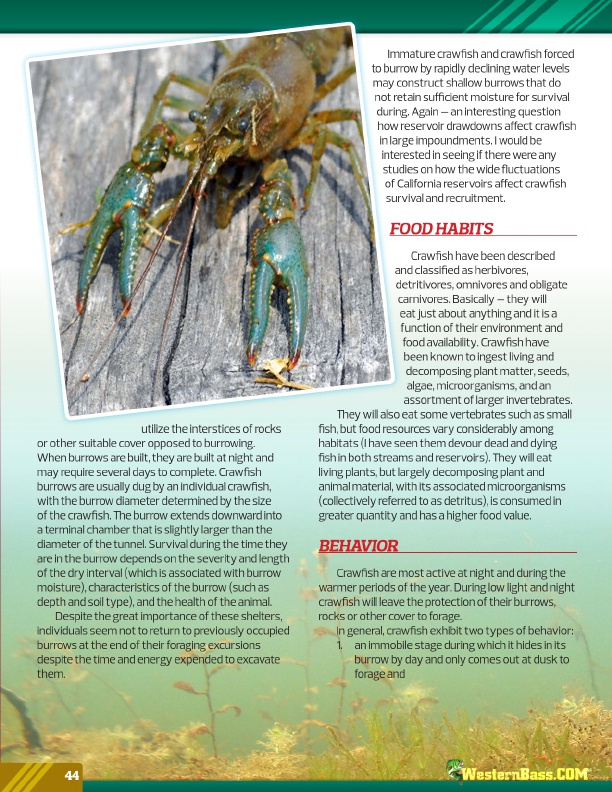
®
utilize the interstices of rocks or other suitable cover opposed to burrowing. When burrows are built, they are built at night and may require several days to complete. Crawfish burrows are usually dug by an individual crawfish, with the burrow diameter determined by the size of the crawfish. The burrow extends downward into a terminal chamber that is slightly larger than the diameter of the tunnel. Survival during the time they are in the burrow depends on the severity and length of the dry interval (which is associated with burrow moisture), characteristics of the burrow (such as depth and soil type), and the health of the animal.
Despite the great importance of these shelters, individuals seem not to return to previously occupied burrows at the end of their foraging excursions despite the time and energy expended to excavate them.
Immature crawfish and crawfish forced to burrow by rapidly declining water levels may construct shallow burrows that do not retain sufficient moisture for survival during. Again – an interesting question how reservoir drawdowns affect crawfish
in large impoundments. I would be
interested in seeing if there were any
studies on how the wide fluctuations
of California reservoirs affect crawfish
survival and recruitment.
FOOD HABITS
Crawfish have been described
and classified as herbivores,
detritivores, omnivores and obligate
carnivores. Basically – they will
eat just about anything and it is a
function of their environment and
food availability. Crawfish have
been known to ingest living and
decomposing plant matter, seeds,
algae, microorganisms, and an
assortment of larger invertebrates.
They will also eat some vertebrates such as small fish, but food resources vary considerably among habitats (I have seen them devour dead and dying fish in both streams and reservoirs). They will eat living plants, but largely decomposing plant and animal material, with its associated microorganisms (collectively referred to as detritus), is consumed in greater quantity and has a higher food value.
BEHAVIOR
Crawfish are most active at night and during the warmer periods of the year. During low light and night crawfish will leave the protection of their burrows, rocks or other cover to forage.
In general, crawfish exhibit two types of behavior:
1. an immobile stage during which it hides in its
burrow by day and only comes out at dusk to
forage and
44